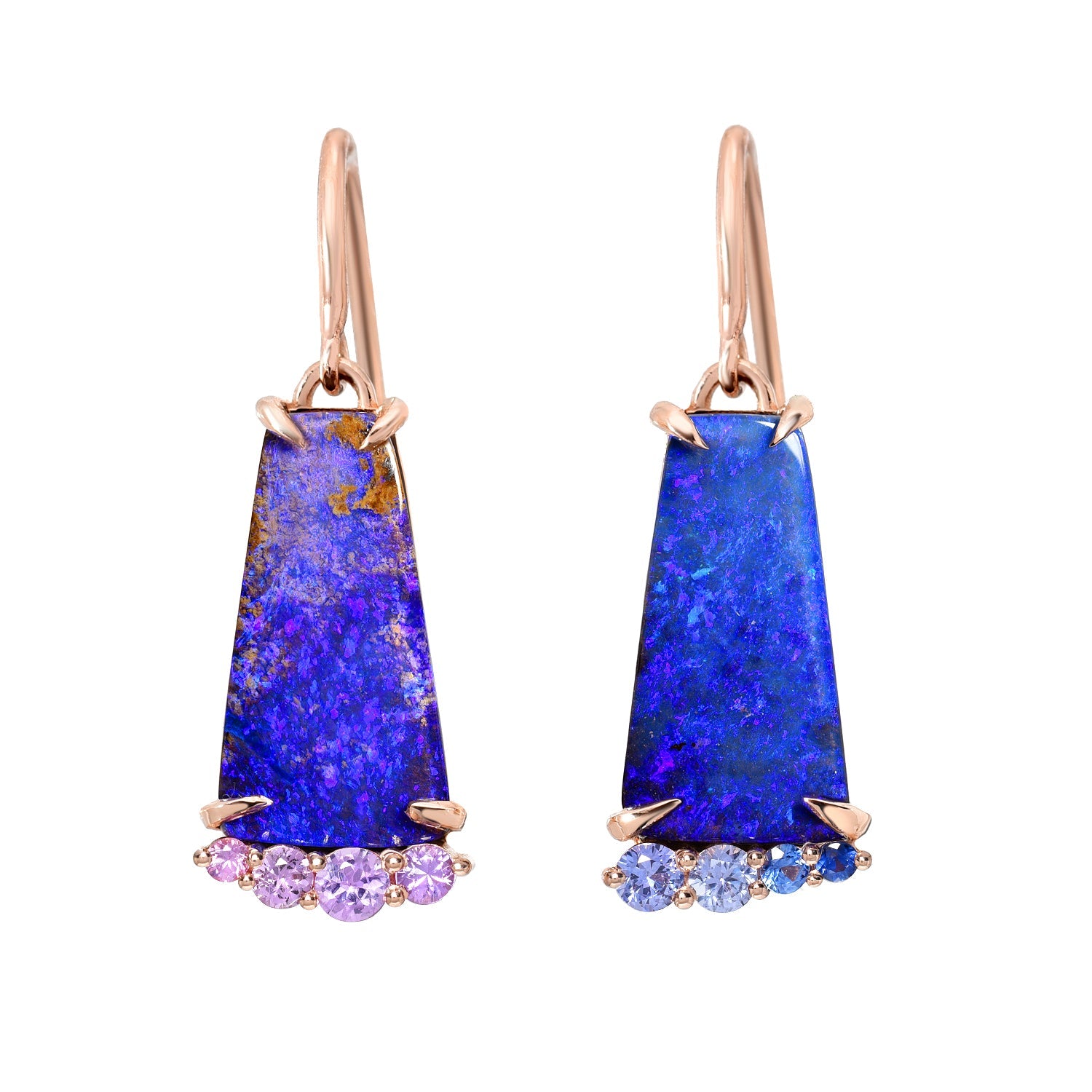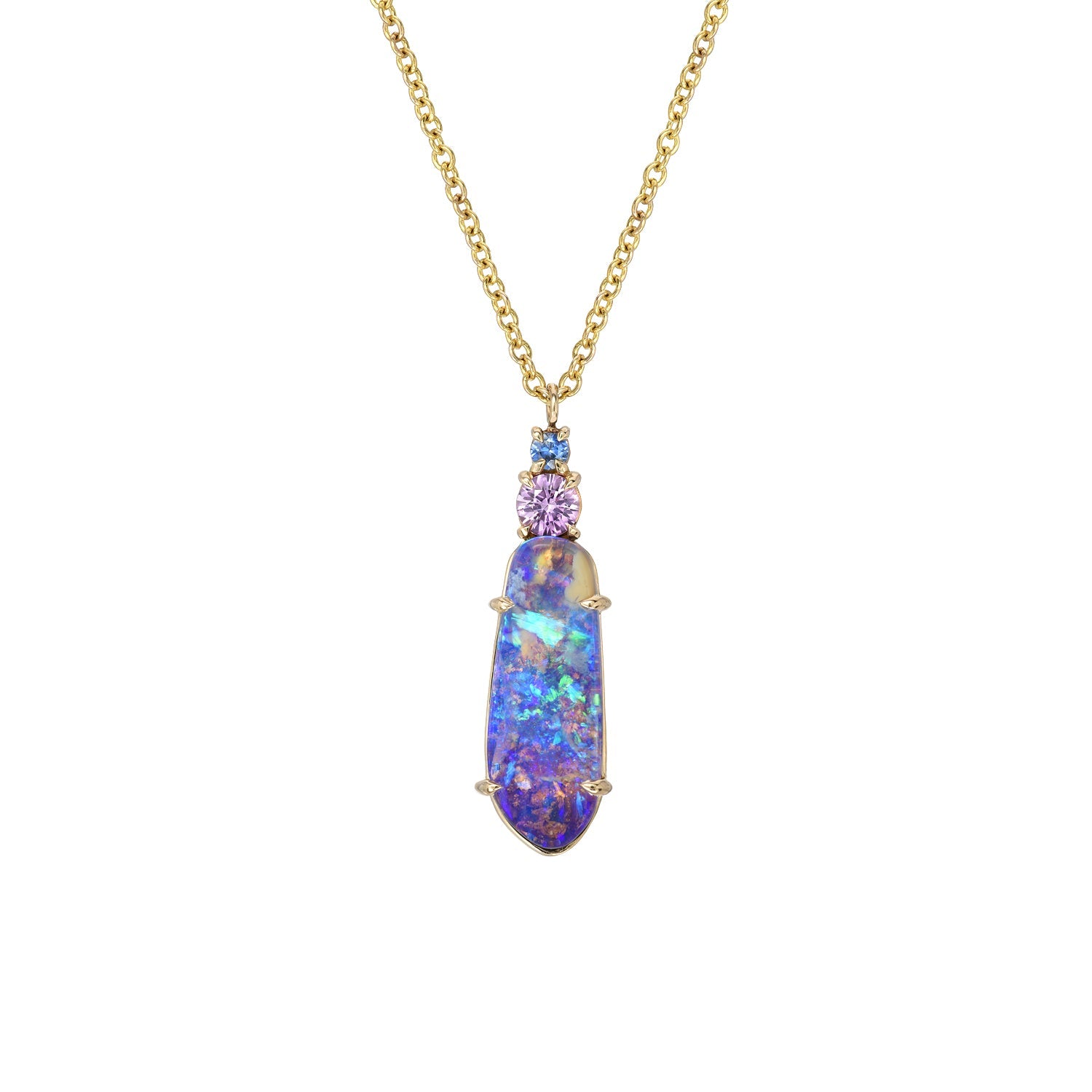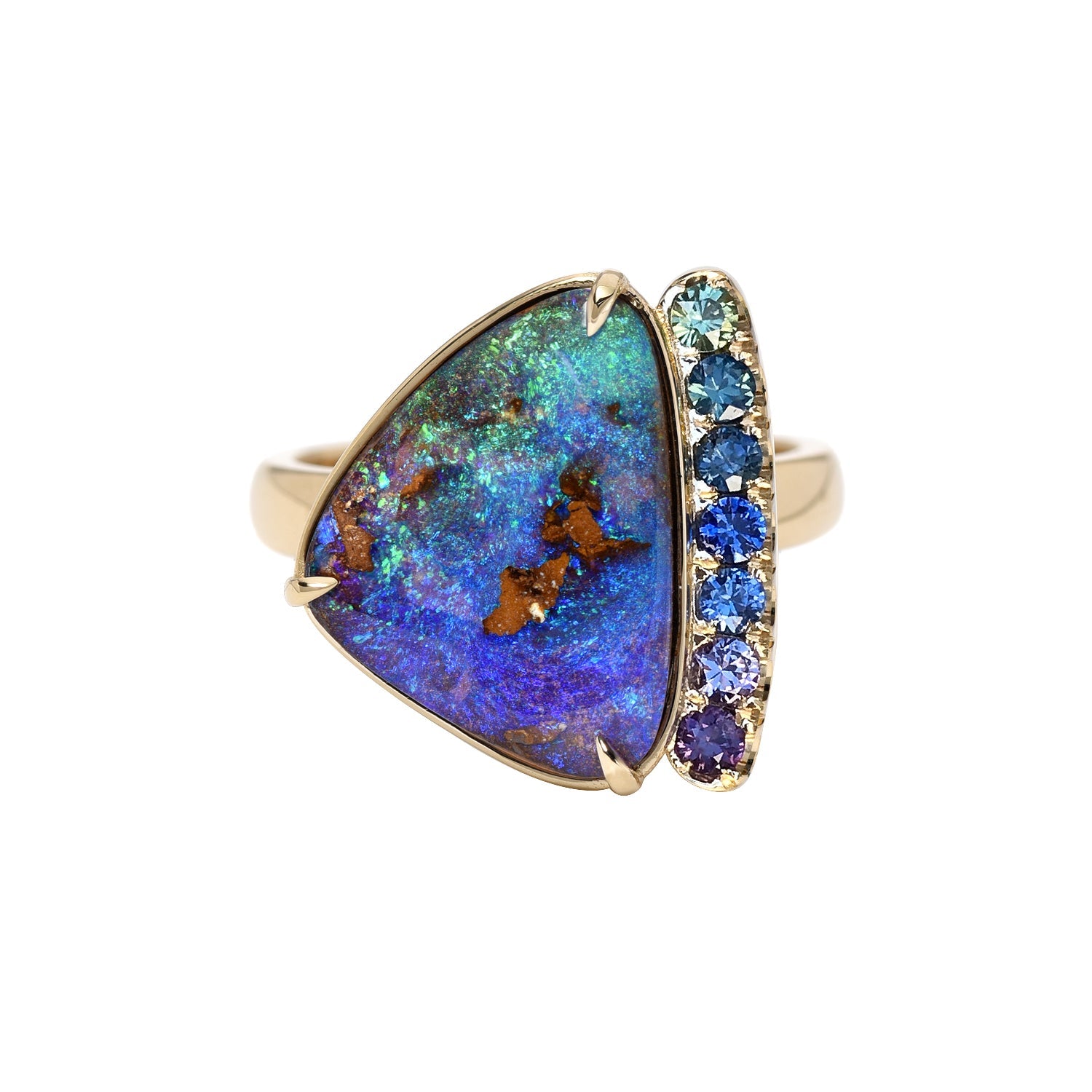The word opal notoriously conjures images of rainbows and colorful flashes. But not all opal aligns with this visual; it speaks to precious opal, but largely neglects non-precious opal which accounts for a great deal of the opal recovered from mining.
Opal is formed from a solution of silicon dioxide and water. As rainwater trickles down through the fissures in the earth it picks up silica from sandstone along the way. Next, the now silica-rich solution settles into cracks and voids of all sizes. Over a long period of time the water evaporates and leaves behind a beautiful silica deposit we call opal.
Opal is composed of uniform spheres of silica, which assemble in a grid-like structure. The spaces between these spheres contain the silica solution. As light passes through the spheres and into this silica solution, it is diffracted, producing an alluring rainbow of vibrant hues.
Both precious and non-precious opal is mined from these crevices and while both are quite beautiful, they are very different from one another.

Light Diffraction Through Silica Spheres, Image by Open Australia
Precious vs. non-precious opal
Precious opal is the term used for any opal that exhibits a “play-of-color” or iridescence. This means as light illuminates the inner contours of the opal, it’s diffused or dispersed throughout the silica spheres to create a brilliant prism of spectacular color. Other examples of things that exhibit this play-of-color or iridescence are soap bubbles, feathers, butterfly wings, and seashell nacre.
If you’ve been following NIXIN Jewelry for a while, you may recall our email about the Papilio Blumei Ring, inspired by an Indonesian butterfly, that described this precise effect. If you'd like to join our mailing list, add your email address to the bottom of our homepage.

Papilio Blumei Ring by NIXIN
Non-precious opal, also called common or “potch” opal, does not exhibit a play-of-color like precious opal and is often milky in appearance. Common opal is typically gray, black, white, or amber in color, but it also occurs naturally in a variety of beautiful colors including a range of lovely pastels. Non-precious opal is found in the same environments as precious opal but is considered less valuable. Depending on the appearance of the potch, a miner or cutter may opt to use it, given the beautifully unique patterns that can result when potch is woven into precious opal, as in the example below.

Boulder Opal with Caramel Colored Potch
Precious Opal, Image by James St. John
How is opal valued?
It is notoriously difficult to value opals because there are so many factors to consider, and they vary so widely in appearance and quality. There are three main aspects that determine whether an opal is precious (highly valuable) or non-precious (less valuable):
-
Color
Body tone (color) is one of the most important factors in the classification and valuation of opals and refers to its overall background or underlying color. Black opal, white opal, crystal opal, boulder opal and matrix opal are all varieties of precious opal, which is also called noble opal. Generally, opals with darker backgrounds are more valuable than those with a lighter background because stones with darker backgrounds offer a more vibrant display or play of colors. Under the right circumstances, the color red, a rarer find, can also drive up the value of an opal. -
Pattern
Distinct color that is displayed in a pattern or pattern segments further determines the quality of an opal. Excellent pattern types include uniform color segments, straight edges, large sections of color in a random pattern, parallel cascading lines of narrow, rolling color or thin strips of overlapping color that may or may not resemble an object, landscape, animal, or person. -
Clarity
The size and quantity of inclusions (small imperfections) can detract from the value of an opal. Imperfections may include cracks, grains of sand or other minerals, potch lines, webbing (gray lines), and windows (sections without color).
Sometimes, potch can even “paint” incredible pictures within an otherwise precious opal, blurring the lines between what’s deemed valuable by traditional industry standards and what is viewed as a treasure in the eye of the beholder. Here at NIXIN, we readily embrace a combination of qualities in these sublime stones, as long as the final result is uniquely beautiful.

Lightening Ridge Black Crystal Opal Necklace by NIXIN
NIXIN Jewelry curates an extraordinary selection of opals to offer the most stunning, collection of handcrafted Australian opal rings for women. We offer a variety of sizes and styles so you’re sure to find one that takes your breath away. Shop our precious opal ring collection, and don’t forget to explore our equally spellbinding opal necklaces and opal earrings.
It’s time to get lost in a galaxy of brilliant colors.





